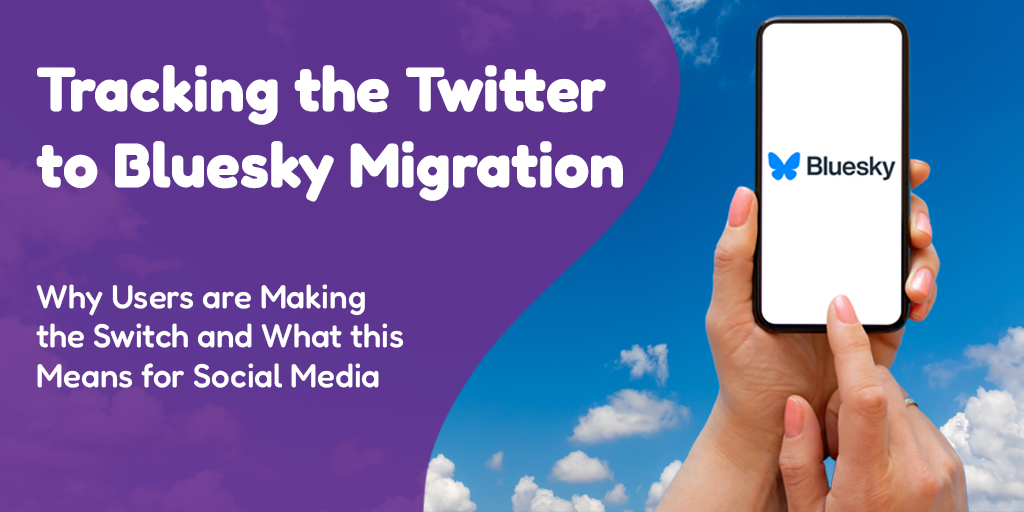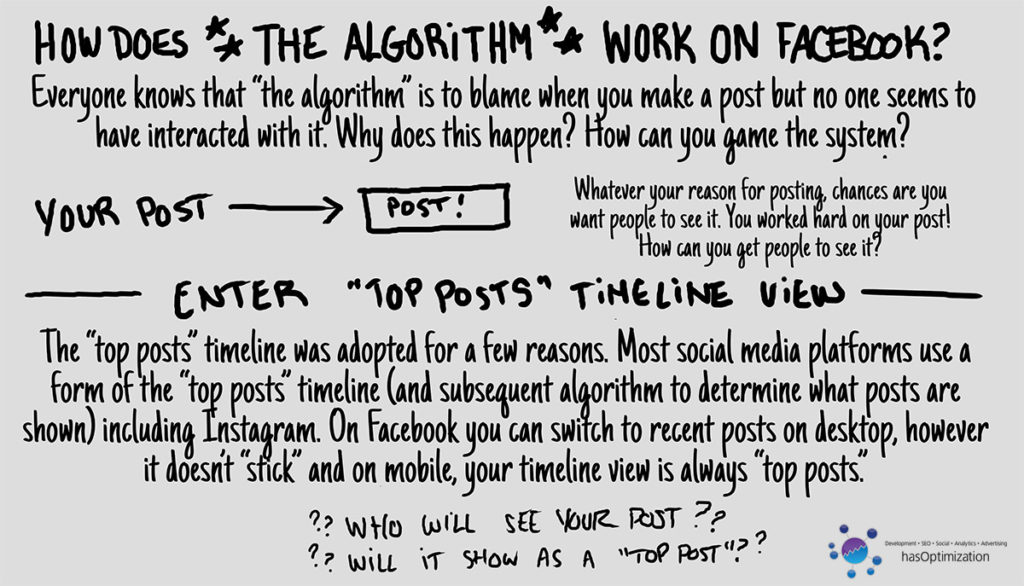 Posted by Aimee Cozza on March 11th, 2019
Posted by Aimee Cozza on March 11th, 2019Chances are, if you’re on the web in 2019, you have heard of the dreaded algorithm. Facebook is not the only social media channel that utilized “the algorithm”… Subsidiary Instagram also utilizes “the algorithm” over recent posts. Twitter has also begun to adopt the same idea, and other social media programs are falling into line as well.
While many of us hate the algorithm (us included; give us a most recent posts timeline!), unfortunately it has become a bit of “web standard”. Understanding how the algorithm works is one way to ensure that you can try to create the very best content and maximize your visibility.

The main reason “top posts” became a thing was… Well, Facebook wanted to monetize. What’s the best way to monetize? Make it so people have to pay so their posts reach more people. Other reasons may be that Facebook thought it was trying to deliver content you wanted to see by only giving you top posts. This may not be the case, and many people, including ourselves, don’t see important information or updates until days later.
Let’s talk about what happens to a post when you post it:
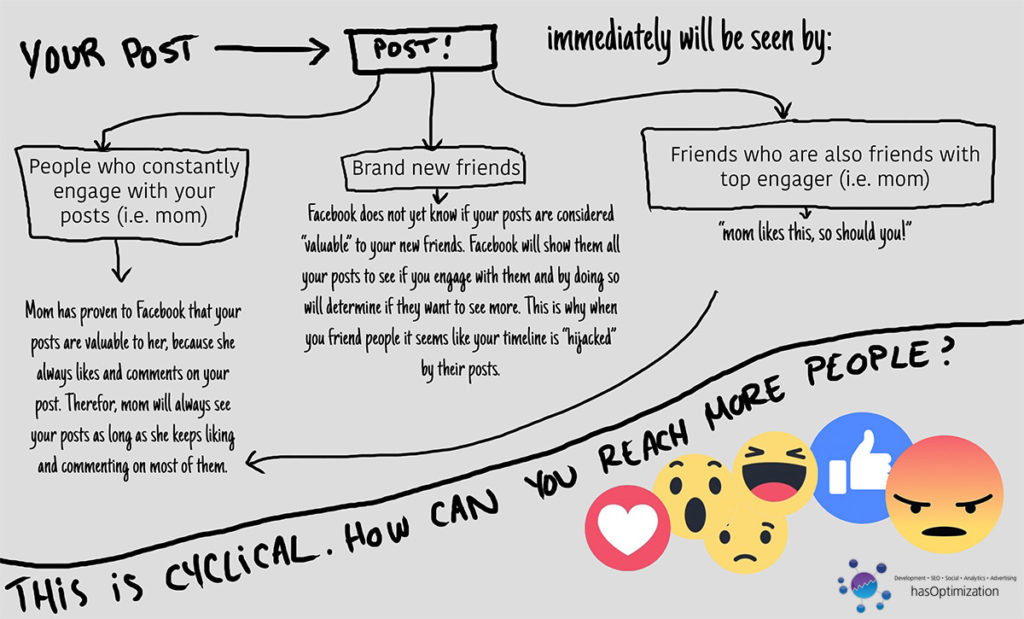
Your post can end up in a very cyclical area when you post it. Your visibility is limited to who has engaged with your posts in the past, and your brand new friends (which Facebook does not know whether or not your content is valuable to them). This is why it seems like only the same six people see your post constantly, and also the reason why when you make new friends on Facebook, it seems like all you ever see is their posts.
There is one factor that can help you break out of this cycle, however. That comes in the form of friends who are also friends with your top engagers.
Here’s how it works:
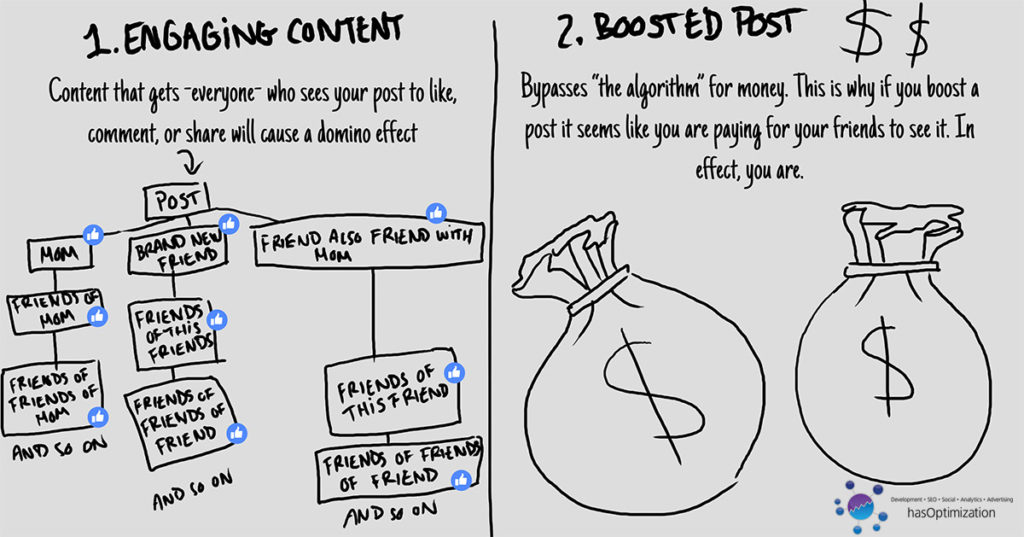
By making content that your other friend who is friends with mom as well likes, you will open up your possibility of being seen dramatically. Once someone hits a reaction on that post or, even better, comments or shares it, suddenly there is a bunch more people who see your post. Mom’s top engagers (which are likely different than yours) will be able to see the post, and hopefully they also like and comment on it, perpetuating your post. This is why it’s important to create engaging content to generate organic results.
Alternatively, if you don’t have time to try to game the system, you can pay a few bucks and “boost” your post.
The Alternative Effect – Silencing Bad or Dangerous Posts on Social Media
It’s important to like, comment, and share posts that are good, wholesome, harmless, etc. However, it’s doubly important not to feed into negative, bad, derogatory, or even downright dangerous posts as well. Yes, that’s right. You parents were right when they said “just ignore them”! When you like, comment, or share an article or post, you are giving the person behind that post more organic reach. This goes for comments as well! By replying to a comment, you may be helping jettison a bad comment on a post into the “most relevant” section of the comments.
The important thing to know is that Facebook does not care about the content of your post or comment. Facebook does not care how many “angry” reactions a post garners. It’s rare for Facebook to police much content aside from reported content anyway, whether or not they claim they are trying to tighten down on false or misleading information. All Facebook cares about is the metric it sees as “engagement”, meaning you made some sort of action on the post. Even if you replied “this is entirely incorrect!” just because you simply replied will suddenly give an incorrect post more volume. Actions on posts that do not count towards engagement are reporting and hiding posts. Feel free to use those to help clean up your feed!
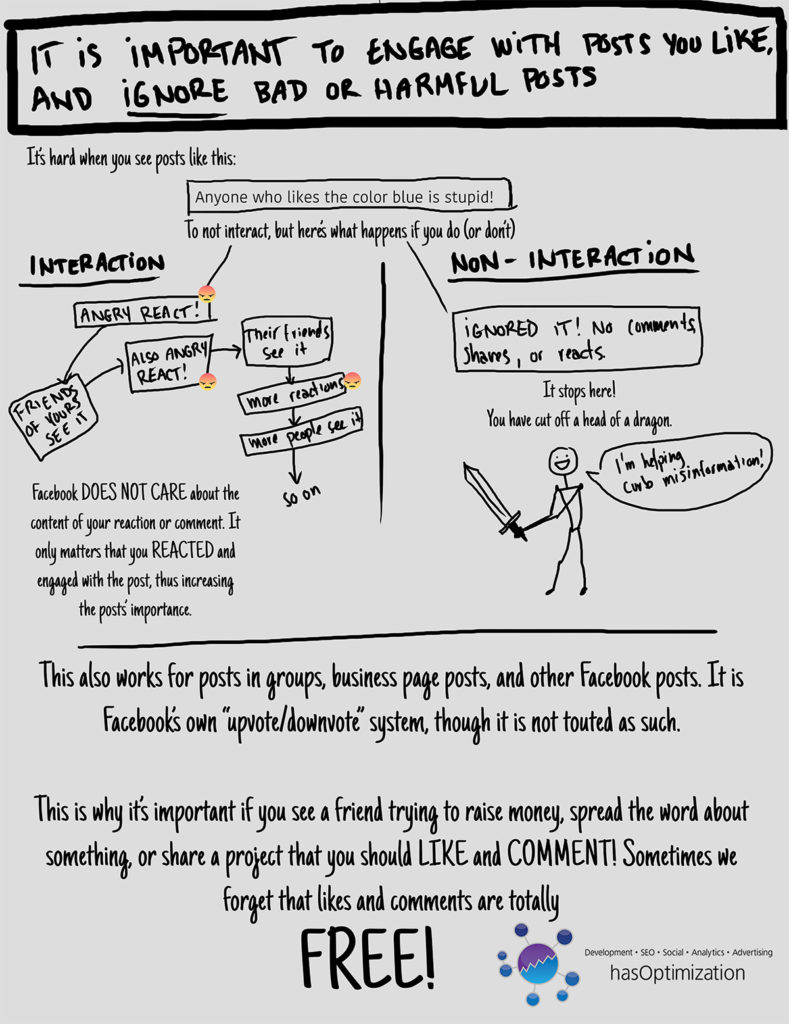
Most Important of All – Support Your Creators
It’s easy for all of us to forget that likes, comments, and shares on social media are free of charge. Helping out someone who really needs it can be very simple and easy to do — just hit the like button or leave a comment, even if it’s a single emoji, to help your friends, family members, and others gather organic reach to obtain their goals. It only takes a second to do and doesn’t cost you a dime.
Want this infographic in full? Take a look at the full version here!


